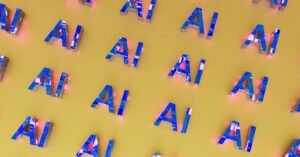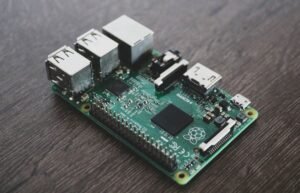Is True AI Possible?
Artificial Intelligence (AI) has become a buzzword in recent years, with advancements in machine learning and neural networks. But is it possible to create true AI, or are we limited to developing systems that mimic human intelligence to a certain extent? In this article, we will explore the concept of true AI and discuss its feasibility.
Key Takeaways:
- True AI refers to the development of systems that can exhibit human-like intelligence.
- Creating true AI faces significant challenges, including understanding consciousness and emotions.
- Various levels of AI exist, ranging from narrow AI that performs specific tasks to general AI that can handle diverse tasks and adapt to new situations.
- AI systems today primarily rely on neural networks and machine learning algorithms.
- Ethical considerations, such as AI’s impact on employment and biases in decision-making, must be addressed.
The Quest for True AI
True AI, also known as artificial general intelligence (AGI), refers to the creation of systems that possess the ability to understand, learn, and apply knowledge in a manner similar to humans. While narrow AI systems excel at specific tasks, such as image recognition or language translation, true AI requires a deeper level of understanding and comprehension.
*Advancements in AGI development have the potential to revolutionize industries and transform society.*
Challenges in Achieving True AI
Developing true AI faces significant challenges that hinder progress. Some of these challenges include:
- Consciousness: Understanding how consciousness arises in humans and replicating it in machines remains a major obstacle in achieving true AI.
- Emotions: Creating AI systems that can experience emotions and have a sense of empathy is a complex problem that researchers are actively exploring.
- Generalization: True AI must have the ability to generalize and apply knowledge from one domain to another, adapting to new situations without explicit instructions.
- Unforeseen Situations: True AI should be capable of handling novel and unpredictable scenarios, making decisions based on learned information and reasoning.
Levels of AI
Within the field of AI, different levels of intelligence are classified:
| Level | Description |
|---|---|
| Narrow AI | AI designed for specific tasks, such as voice recognition or playing chess. |
| General AI | AI that can handle diverse tasks, reason, and learn like a human. |
| Superintelligent AI | Hypothetical AI surpassing human intelligence across all domains. |
*Reaching the level of general AI represents a significant leap in AI development.*
The Current State of AI
While true AI remains an elusive goal, significant progress has been made in developing AI systems that can perform complex tasks. Today’s AI systems primarily rely on neural networks and machine learning algorithms, with deep learning leading the way in various applications.
The Future of True AI
As AI technology evolves, the possibility of achieving true AI becomes more plausible. However, it is important to address ethical considerations and potential risks associated with AI development. Debates surrounding job displacement, biases in decision-making, and AI’s impact on society are crucial to ensure a responsible pathway towards true AI.
Conclusion
*The quest for true AI continues to captivate the minds of scientists and researchers. Despite the challenges, advancements in AI technology bring us closer to a future where systems can exhibit human-like intelligence.*
References
- “Artificial General Intelligence: A Gentle Introduction.” by Ben Goertzel (2011)
- “Superintelligence: Paths, Dangers, Strategies” by Nick Bostrom (2014)

Common Misconceptions
1. AI will surpass human intelligence in all areas
One common misconception about true AI is that it will surpass human intelligence in all areas. However, it is important to note that AI is designed to excel in specific tasks rather than replicate human intelligence as a whole.
- True AI has limitations and may struggle with tasks that rely heavily on intuition or creativity.
- AI still requires human intervention and guidance to train and improve its accuracy and efficiency.
- While AI can outperform humans in certain areas, it is unlikely to achieve overall cognitive superiority.
2. True AI will render human labor obsolete
Another misconception is that true AI will completely replace all human labor. While AI has the potential to automate certain tasks and streamline processes, human expertise and skills will still be necessary in many fields.
- Humans possess unique qualities, such as empathy and creativity, that are difficult to replicate in AI.
- AI is most effective when working alongside humans, complementing their abilities rather than completely replacing them.
- Certain jobs, such as those requiring interpersonal communication and complex decision-making, are less likely to be replaced by AI.
3. AI will have consciousness and emotions
Some people mistakenly believe that true AI will possess consciousness and emotions similar to humans. However, consciousness and emotions arise from complex biological processes that are currently not understood enough to replicate in AI systems.
- AI is based on algorithms and data processing, lacking the biological components that support consciousness and emotions.
- Emotions are subjective experiences that may be difficult to define and replicate in AI systems.
- AI may be able to mimic emotions through programmed responses, but it is unlikely to truly experience or understand them.
4. AI is infallible and unbiased
Another misconception is that AI is inherently infallible and unbiased. However, AI systems can suffer from biases and errors, as they are designed and trained by humans who may unknowingly introduce their own biases.
- AI algorithms can be influenced by biased data sets, leading to biased outcomes and discriminatory decisions.
- AI systems require careful monitoring and ongoing evaluation to ensure they are free from biases and errors.
- Improving AI’s fairness and reducing bias is an ongoing challenge that requires continuous research and development.
5. True AI will bring about the end of humanity
A common misconception perpetuated by science fiction is the idea that true AI will eventually lead to the downfall or enslavement of humanity. While it’s essential to ethically regulate and control AI’s development, such dire outcomes are highly unlikely.
- AI’s purpose is to augment human capabilities, not to replace or endanger humans.
- The development of AI is guided by strong ethical principles and regulations to prevent harmful scenarios.
- AI is a tool created by humans and will always require human supervision to prevent any unintended consequences.

Table: Top 10 AI Technologies of 2021
AI has revolutionized various fields, from healthcare to finance to transportation. This table presents the top 10 AI technologies that have made significant strides in 2021, showcasing the incredible progress in the field.
Table: Yearly AI Investment by Country (2010-2020)
Investments in AI have been instrumental in driving its growth. This table provides data on the annual AI investments made by different countries from 2010 to 2020, revealing the rising global interest and commitment to true AI development.
Table: AI’s Impact on Job Market: Before & After
AI’s integration into various industries has transformed the job market. This table compares employment statistics before and after the introduction of AI, highlighting the remarkable changes in job roles and requirements.
Table: Accuracy Comparison between Human and AI Diagnoses
The potential of AI in medical fields is crucial to improving diagnosis accuracy. This table illustrates a comparison of diagnostic accuracy between AI systems and human experts, emphasizing the significant benefit that AI can provide to healthcare.
Table: AI’s Influence on Customer Satisfaction
Companies adopting AI technologies have witnessed changes in customer satisfaction levels. This table presents data reflecting the impact of AI implementation on customer satisfaction rates, emphasizing its role in enhancing user experiences.
Table: AI Breakthroughs by Research Institutions
Research institutions worldwide continue to push the boundaries of AI capabilities. This table highlights the groundbreaking achievements by different institutions, showcasing the collective efforts toward realizing true AI.
Table: AI Algorithms Accuracy Comparison
Accuracy is a critical factor in evaluating AI algorithms. This table displays a comparative analysis of accuracy rates for different AI algorithms, offering insights into the advancements of each approach.
Table: AI-Assisted Vision Systems Performance
Vision systems enhanced by AI algorithms have revolutionized fields like autonomous vehicles and surveillance. This table compares the performance of AI-assisted vision systems, highlighting their capability to interpret visual data accurately.
Table: The Rise of AI Startups
The emergence of AI startups has reshaped the technological landscape. This table provides data on the increasing number of AI startups founded in recent years, representing a vibrant entrepreneurial ecosystem focused on AI innovation.
Table: AI Adoption by Industry
AI’s impact is prevalent across various industries. This table showcases the extent of AI adoption in different sectors, shedding light on the diverse applications and the potential for true AI integration in multiple domains.
Throughout the years, AI has made incredible advancements, as demonstrated by the tables above. From the development of cutting-edge technologies to the global rise in investments, the impact of AI on various aspects of society is undeniable. Industries have witnessed significant changes in job markets, customer satisfaction levels, and even medical diagnostics. Research institutions and startups alike continue to contribute to the growth of the field. While true AI may still seem distant, these tables provide evidence that we are steadily moving closer to unlocking its full potential. As technology continues to evolve, the future holds endless possibilities for the advancements and applications of AI.
Frequently Asked Questions
Is True AI possible?
What is True AI?
What are the current limitations of AI?
Can AI ever surpass human intelligence?
What are the ethical concerns surrounding true AI?
Are there any ongoing efforts to achieve True AI?
What is the Turing Test?
Can AI be self-aware?
Will true AI make human intelligence obsolete?
Are there any risks associated with developing true AI?
How long will it take to achieve true AI?




